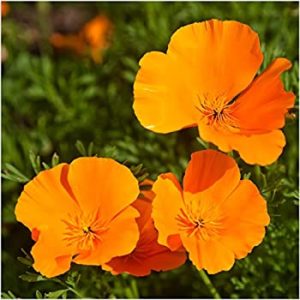Wildflower gardening is natural, easy and rewarding. Like magic, a handful of seeds can transform a little plot of soil into a bouquet of color and texture – and all with minimal effort.
In our Valley, it is natural for wildflowers to get started in late fall just as soon as the soil cools. So, following Mother Nature’s lead is the best approach – Fall planting is taking the path of least resistance and greatest success.
But there are a few things to keep in mind to ensure your wildflower garden is the success you want it to be:
Soil Preparation
Of course, in nature wildflowers fend for themselves without soil preparation; but Mother Nature can tolerate a much higher rate of failure than most homeowners. Some minimal soil preparation will go a long way, ensuring your wildflower success, and it does NOT have to be a major project. Just scratch the soil surface down an inch or two, rake it smooth, and distribute the seeds according to the package instructions. This small preparation will help your wildflowers get a good start and protect the seeds from becoming a bird banquet.
TIP: Use a light covering of mulch to protect your wildflower seeds then press the seeds into place by simply walking over the planting areas. For a large space borrow one of our water rollers to simplify the job.
Don’t Plant Too Deep
A planting depth of ¼” to ½” is preferred. While wildflower seeds will germinate at greater depths, they will not have the strength to push through the overlying soil.
Irrigation
Make sure the seeds stay moist; NOT WET. Avoid overwatering and make sure the location is well-drained to avoid root rot and leaf mold. Wildflowers are very hardy and drought-tolerant; more water than necessary is NOT better; when in doubt, err on the side of under-watering.
Patience
Wildflowers are somewhat more weather responsive than domesticated flowers – they will grow when they think it best. Here in our Valley, weather permitting it is possible to get some fall and winter color from your wildflower garden. If the weather runs too cold or wet, they will wait until spring to show up. This delay is NOT a sign of failure; it is how wildflowers have learned to survive.
Wildflowers can be a rewarding, low maintenance gardening project if you keep in mind they are “WILD” flowers and resist the temptation to micro-manage them. Generally, they will prosper best with what might be called benign neglect.

